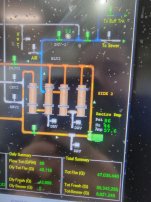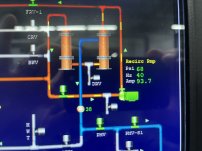Dirty Laundry
Plastic
- Joined
- Dec 23, 2023
Hi all.
I operate a commercial laundry. We have various motors running. I have a 60hp Baldor motor (runs 10 hours per day which circulates water in wastewater treatment machine.
We are wired for 208v service into the building. This 60 hp motor/pump is wired 208v, like anything else we’ve replaced motors for over the past 20 years.
My amperage draw on this wastewater machine is 90-95 amps when the machine is running at an acceptable flow.
My friend in Ohio has TWO of these 60hp Baldor motors running with his system (2x the size of mine)……… and his amperage draw is 55-60amps, when operating at acceptable flow levels.
Does that mean his cost per gallon produced in the wastewater machine is less? Does he consume less kW than I do?
What are my options?
Remaining in compliance with the EPA has caused our electric bill to skyrocket.
What would you all suggest?
Thank you
I operate a commercial laundry. We have various motors running. I have a 60hp Baldor motor (runs 10 hours per day which circulates water in wastewater treatment machine.
We are wired for 208v service into the building. This 60 hp motor/pump is wired 208v, like anything else we’ve replaced motors for over the past 20 years.
My amperage draw on this wastewater machine is 90-95 amps when the machine is running at an acceptable flow.
My friend in Ohio has TWO of these 60hp Baldor motors running with his system (2x the size of mine)……… and his amperage draw is 55-60amps, when operating at acceptable flow levels.
Does that mean his cost per gallon produced in the wastewater machine is less? Does he consume less kW than I do?
What are my options?
Remaining in compliance with the EPA has caused our electric bill to skyrocket.
What would you all suggest?
Thank you







